Need for Speed (NFS) is a racing game franchise published by Electronic Arts and currently developed by Criterion Games, the developers of Burnout. The series generally centers around illegal street racing and tasks players to complete various types of races while evading the local law enforcement in police pursuits. The series is one of EA's oldest franchises not published under their EA Sports brand. The series released its first title, The Need for Speed, in 1994. The most recent game, Need for Speed Unbound, was released on December 2, 2022. Additionally, a free-to-play mobile installment released in 2015, Need for Speed: No Limits, is actively developed by Firemonkeys Studios, the developers of Real Racing 3.

Moto Racer, mislabeled as Moto Racer Gold, is an arcade style motorcycle racing game developed by Delphine Software International and published by Electronic Arts for Microsoft Windows and PlayStation. The game was originally to be published by BMG Interactive, but after BMG closed down its U.S. operations it sold the publication rights to Electronic Arts. Critics hailed the game as the first outstanding arcade-style racer to appear on PC, and the PlayStation version in turn was called a strong conversion in reviews.

Need for Speed: High Stakes is a 1999 racing video game developed by EA Canada and EA Seattle and published by Electronic Arts for the PlayStation and Microsoft Windows. It is the fourth game in the Need for Speed series and a follow-up to Need for Speed III: Hot Pursuit. The game features more realistic elements than its predecessors and introduced a damage system that allows cars to take damage when colliding with objects, affecting their appearance and performance. It also introduced a series of economy-based tournaments, awarding players with a cash prize that can be spent on repairing, purchasing, or upgrading cars for subsequent races. The game's Hot Pursuit mode, which was introduced in Hot Pursuit, was expanded with more options, allowing players to control police pursuits attempting to stop racers.

Need for Speed: Porsche Unleashed, released as Need for Speed: Porsche 2000 in Europe and Need for Speed: Porsche in Latin America and Germany, is a 2000 racing video game. It is the fifth installment in the Need for Speed series. Unlike other NFS titles, Porsche Unleashed centers on racing Porsche sports cars, with models ranging from years 1950 to 2000.

V-Rally 2 is a racing video game developed by Eden Studios and published by Infogrames for PlayStation, Dreamcast and Microsoft Windows. It was originally planned for release as a Nintendo 64 title, but was cancelled during the early development phases of the game and was never officially announced.

Formula 1 97 is a racing video game developed by Bizarre Creations and published by Psygnosis for PlayStation and Microsoft Windows. It is the sequel to the 1996 video game Formula 1 and was based on the 1997 Formula One World Championship. This was the last Formula One game to be made by the Bizarre Creations team, who moved on to create the successful Metropolis Street Racer for the Dreamcast and Project Gotham Racing for the Xbox.

Sports Car GT is a 1999 racing sim game based on GT racing. It was published by Electronic Arts (EA) and developed by Image Space Incorporated for Microsoft Windows, and Point of View for PlayStation. Both editions of the game feature co-development by Westwood Studios. The PC version received "favorable" reviews, while the PlayStation version received "mixed" reviews.

Destruction Derby 2 is a vehicular combat racing video game developed by Reflections Interactive and published in 1996 by Psygnosis for Microsoft Windows and PlayStation. The sequel to Destruction Derby, players race with the goal of earning points by damaging opponent cars. Standard races and matches based in arenas with the goal of remaining the last player driving are also available. The game is an overhaul of the original and features ideas that did not make it into the first game including tracks that feature obstacles and improved realism. The car mechanics were also redesigned. Development was also focused on Americanisation: the game style shifted away from the British banger racing of the original, and the cars and music were changed to fit a NASCAR theme. The game features Paul Page as commentator, and the soundtrack was created by thrash metal bands Jug and Tuscan. The game was positively received, with reviewers praising the large tracks and car physics, though the PC version was criticised for its difficulty.

TOCA: Touring Car Championship is a 3D racing video game licensed by series organisers TOCA, and developed and published by Codemasters for the PlayStation and Microsoft Windows platforms in 1997-1998. It was re-released by Codemasters for the Game Boy Color in 2000. It was the first entry in the eponymous series and was followed by TOCA 2 Touring Cars in 1998. The player takes control of a driver who races for one of the eight works teams that contested the 1997 British Touring Car Championship against fifteen AI competitors on one of the nine championship circuits. A championship mode is available for players with the objective of earning points to continue competing and unlocking new features.
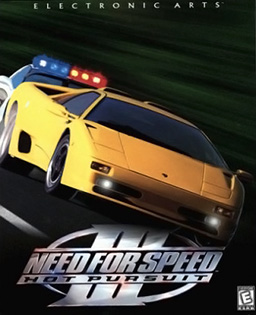
Need for Speed III: Hot Pursuit is a 1998 racing video game developed for PlayStation by EA Canada and Microsoft Windows by EA Seattle, and published by Electronic Arts. It is the third major installment in the Need for Speed franchise, incorporating police pursuits as a major part of gameplay. Hot Pursuit remains focused on racing using exotic sports cars, but features races that primarily take place in locations within North America, including varied settings and climates. Police AI is improved over the first game, utilizing several tactics to stop both the player and opponent. The PlayStation version was released on March 25, 1998, while the Windows version was released on October 12 the same year. The game received critical success, with praise for its graphics and customization options. It received a direct sequel in 2002 and a reboot in 2010.

Ridge Racer is a 1993 racing video game developed and published by Namco. It was released initially on the Namco System 22 arcade system board and ported to the PlayStation console in 1994. It is the first title in the Ridge Racer series released for arcades and home consoles.

The Need for Speed is a 1994 racing game developed by EA Canada, originally known as Pioneer Productions, and published by Electronic Arts for 3DO in 1994. It allows driving eight licensed sports cars in three point-to-point tracks either with or without a computer opponent. Checkpoints, traffic vehicles, and police pursuits appear in the races.
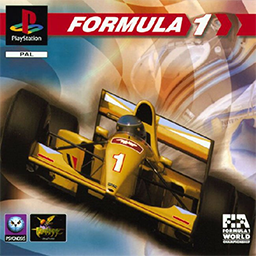
Formula 1 is a racing video game developed by Bizarre Creations and published by Psygnosis for PlayStation and Microsoft Windows. It is the first installment in Sony's Formula One series.

Test Drive 4 is a racing game developed by Pitbull Syndicate and published by Accolade for PlayStation and Microsoft Windows in 1997. It offers 14 supercars and muscle cars, and tasks the player with beating computer opponents in tracks set in real life locales. The game's tracks are long courses with rural roads and urban streets, and commonly feature traffic and short corners. The player has to arrive at each checkpoint before the Checkpoint Timer expires, resulting in additional time, and crossing the finish line is required to complete the race. Test Drive 4's commercial success briefly made Test Drive the best selling racing franchise, but the game received mixed reviews. In 1999 the game was republished under the Greatest Hits label after selling 850,000 copies within one year of its release.

Test Drive 6 is a racing video game developed by Pitbull Syndicate for PlayStation, Microsoft Windows and Dreamcast. In the United States the game was published by Infogrames North America, while in Europe the game was published by Cryo Interactive. The game featured 37 licensed cars, plus four police car variants. As a first for the series, cars from General Motors are not playable in this game, instead they appear as traffic cars. The soundtrack featured industrial rock and techno music from artists such as Fear Factory, Lunatic Calm and Cirrus.
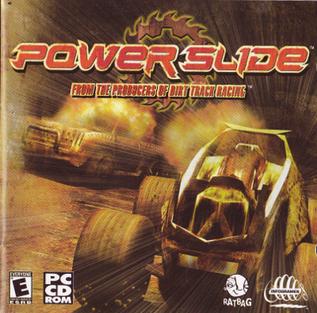
Powerslide is a post-apocalyptic Microsoft Windows racing game by Australian developer Ratbag Games. It was released in Australia, United States and Europe in 1998. Powerslide was praised for its graphics and AI in particular. A sequel, Powerslide: Slipstream, was in development as of 2004, but Ratbag couldn't find a suitable publisher, and shortly after the company was shut down. Powerslide was re-released on GOG.com in 2012.

Need for Speed: Shift is a 2009 racing video game developed by Slightly Mad Studios in conjunction with EA Bright Light and published by Electronic Arts for Microsoft Windows, PlayStation 3, Xbox 360, PlayStation Portable, Android, iOS, Symbian, Windows Mobile, MeeGo and J2ME. It is the thirteenth installment in the Need for Speed franchise.
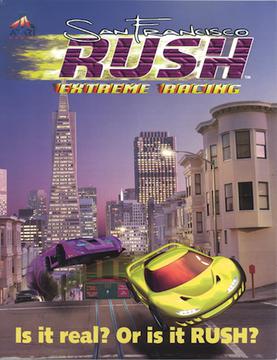
San Francisco Rush: Extreme Racing is a video game developed and published by Atari Games. This game was first released in arcades in 1996 and was ported to Nintendo 64 in 1997 and the PlayStation in 1998. San Francisco Rush: Extreme Racing is the first game in the Rush series.

Porsche Challenge is a racing video game developed by SCE Studios Soho and published by Sony Computer Entertainment released for the PlayStation. The player and computer-controlled cars in the game consist of Porsche Boxsters.
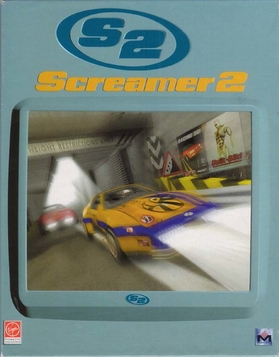
Screamer 2 is a video game developed by Milestone and published by Virgin Interactive Entertainment, released in 1996 on September 30 in North America and November 15 in Europe. It is the second game in the Screamer series. Unlike its predecessor, which drew heavily from Namco's Ridge Racer, Screamer 2 moved towards a rally-oriented style, replacing the six high-performance road cars of the previous game with four rally cars. The game supports up to two players using a split screen and up to four players over a network. A sequel, Screamer Rally, was released in 1997.



















